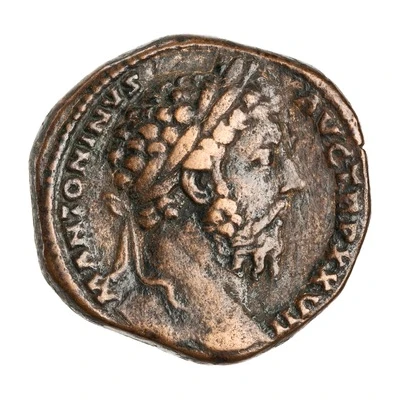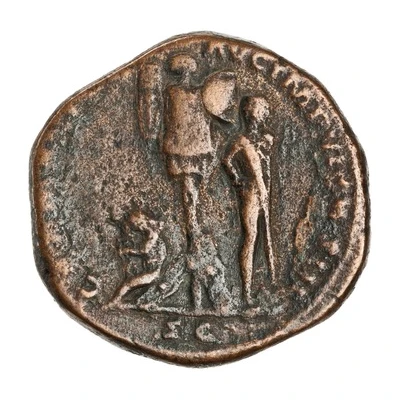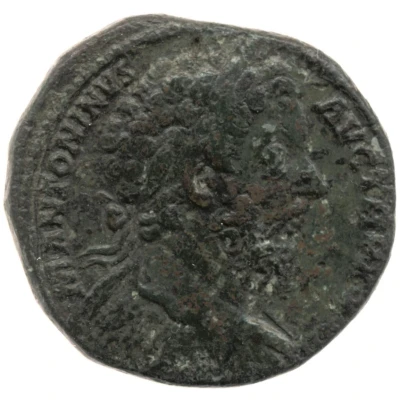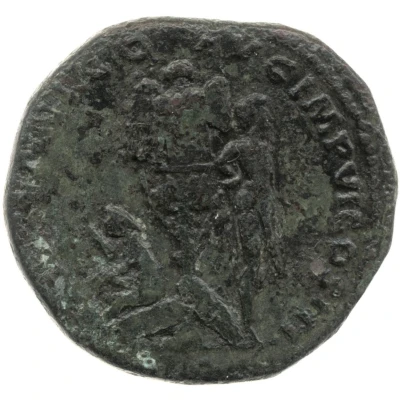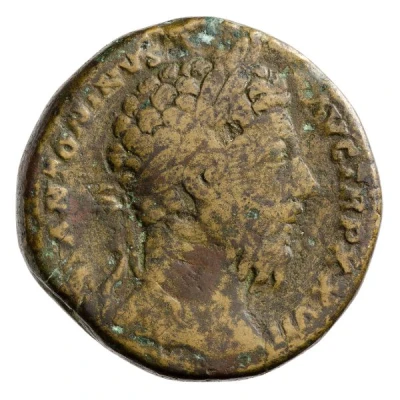
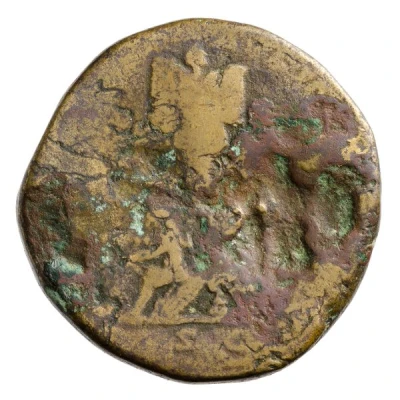

© Münzkabinett der Universität Göttingen (CC BY-NC 4.0 DE)
Sestertius - Marcus Aurelius GERMANICO AVG IMP VI COS III S C
| Bronze | 24.6 g | 30.5 mm |
| Issuer | Rome › Roman Empire (27 BC - 395 AD) |
|---|---|
| Emperor | Marcus Aurelius (Marcus Aurelius Antoninus) (161-180) |
| Type | Standard circulation coin |
| Years | 172-173 |
| Value | 1 Sestertius = ¼ Denarius |
| Currency | Denarius, Reform of Augustus (27 BC – AD 215) |
| Composition | Bronze |
| Weight | 24.6 g |
| Diameter | 30.5 mm |
| Shape | Round (irregular) |
| Technique | Hammered |
| Demonetized | Yes |
| Updated | 2024-10-06 |
| Numista | N#263763 |
|---|---|
| Rarity index | 95% |
Reverse
Trophy with shields at foot; to left, German woman, seated left on shield, propping up head with right hand and resting left arm on knee; to right, German man, standing right, with hands tied behind back.
Script: Latin
Lettering: GERMANICO AVG IMP VI COS III S C
Translation:
Germanico Augusto, Imperator Sextum, Consul Tertium. Senatus Consultum.
To the conqueror of the Germans, emperor (Augustus), supreme commander (Imperator) for the sixth time, consul for the third time. Decree of the senate.
Comment
Mass varies: 20.43–29.1 g;Example of this type:
Münzkabinett der Universität Göttingen
Source:
Online Coins of the Roman Empire (OCRE)
Interesting fact
The Sestertius coin features an image of Marcus Aurelius on one side and a depiction of Germanicus on the other. Germanicus was a popular Roman general and the adopted son of Tiberius, and his image was often used on coins during this time period. However, the fact that Marcus Aurelius chose to feature Germanicus on his coins is significant, as it suggests that he was trying to associate himself with the popular and successful general, who had died several years earlier. This coin may have been an attempt by Marcus Aurelius to bolster his own reputation and legitimacy as emperor by linking himself to a well-respected and admired figure from the past.
